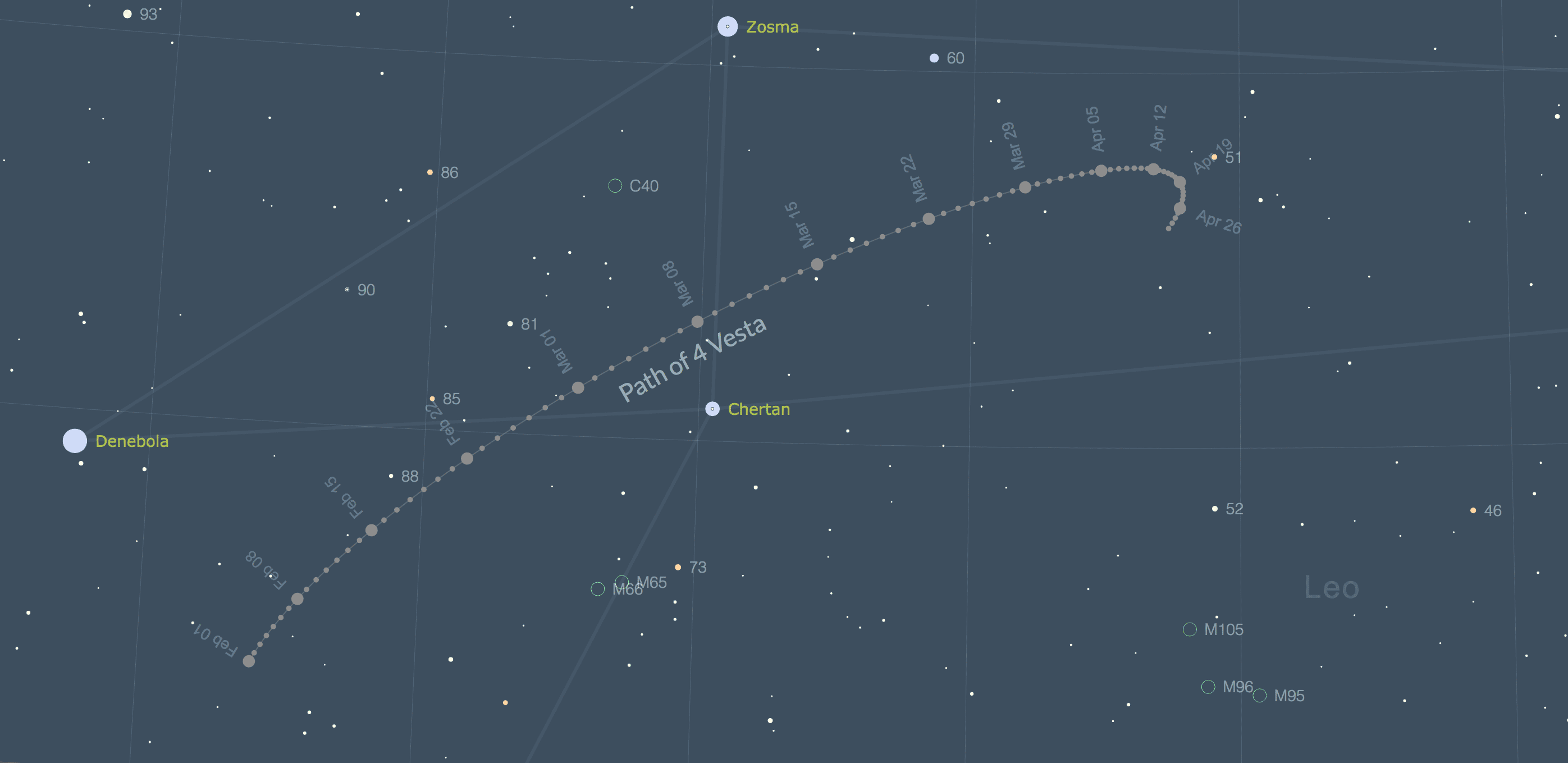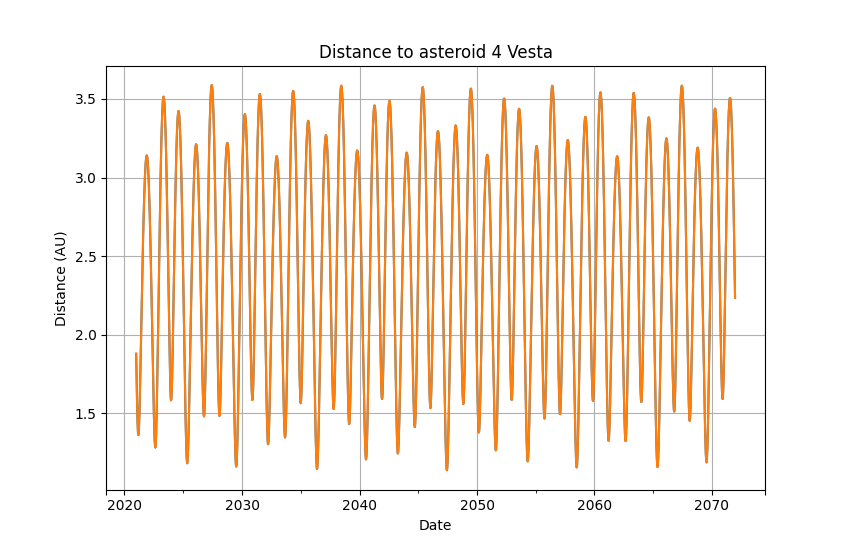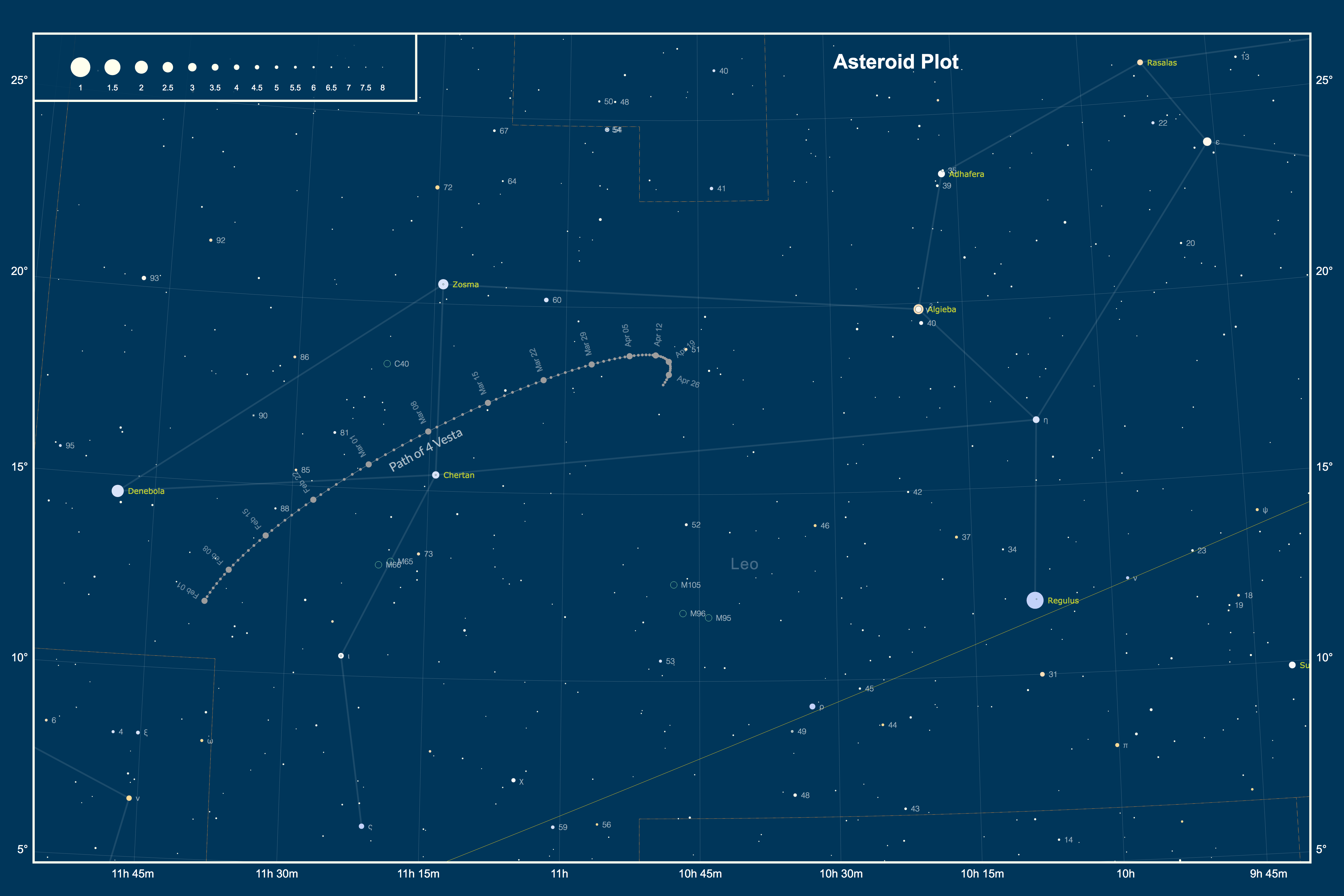
Finding Vesta
March 2021 :
Note: This article may contain outdated information
This article was published in the March 2021 issue of The Skyscraper and likely contains some information that was pertinent only for that month. It is being provided here for historical reference only.
The planet bonanza of the past several months is now over. Jupiter & Saturn have passed behind the Sun and are now early morning objects. Venus is now passing behind the Sun (superior conjunction is on March 26) on the way to becoming an evening star once again, and Mars has faded from prominence as it mingles with the brighter stars of the Winter Hexagon.
Even our ice giants are moving out of view, with Neptune heading towards conjunction on March 11 and Uranus moving lower in the west.
With the big and bright planets mostly out of view in our evening skies this month, we can turn towards the asteroid belt for our current object of interest.
Vesta is the second largest object in the asteroid belt, surpassed only by dwarf planet Ceres. Orbiting the Sun at an average distance of 2.36 AU, Vesta is the brightest of the main belt asteroids, and is easy to observe once you know where to look for it.
With a synodic period of just under 17 months, Vesta has five oppositions approximately every seven years. Owing to its eccentric orbit, not all apparitions of Vesta are the same. The distance between Earth and Vesta during successive apparitions can vary significantly, ranging from 1.59 AU to as close as 1.14 AU. Much like Mars, this difference in distance is quite noticeable. Although Vesta is much too small to be resolved as a disk in most ground-based telescopes, its brightness and the angular distance of sky it covers over a given period of time are the most observable properties. During the closest apparitions, Vesta can shine as bright as magnitude 5.4 in our sky, bright enough to be visible to the unaided eye under dark sky conditions.

In 2021, Vesta reaches opposition on March 4, and is closest to Earth on March 9, when it will be at a distance of 1.361 AU. This is a “middle-range” apparition, as seen by the chart. In the few days close to opposition, Vesta is as bright as magnitude 5.8, which is about as bright as Uranus, so if you’ve had success tracking Uranus, you’ll find Vesta just as easily. However, Vesta will appear starlike with no discernable color even in the largest telescopes, unlike Uranus, which will resolve as a tiny blue-green orb even in relatively small telescopes under high magnification.
With no visual distinction from background stars, the easiest way to identify Vesta is to observe it on successive nights, and note the change in its position relative to the background stars. And this year Vesta is quite easy to find, as it can be seen looping through the hindquarters of Leo, relatively close to some bright stars. At midnight on March 9, when Vesta is closest and brightest, it is conveniently located along a line connecting Chertan (theta Leonic) to Zosma (delta Leonis), about ¼ of the distance between the two stars.
Another simple way to identify Vesta is to take an image of Leo on two separate nights. Any camera will do the trick, as long as you can set exposure controls, and place or mount it to something steady, no tracking required. Even most phone cameras should be able to capture it. Once you have your two images, you can compare them to identify the moving object. You can even align and combine them to create a “blink” animation, demonstrating the motion of Vesta.
If you don’t manage to see Vesta at its closest approach, keep watching it over the next several weeks as Leo gets higher in the evening sky. Scan Leo with binoculars each time you’re out, and note the position of the dimmer stars within lion’s asterism. You should be able to easily identify the moving object. That’s Vesta.
Good luck, and have fun exploring the




